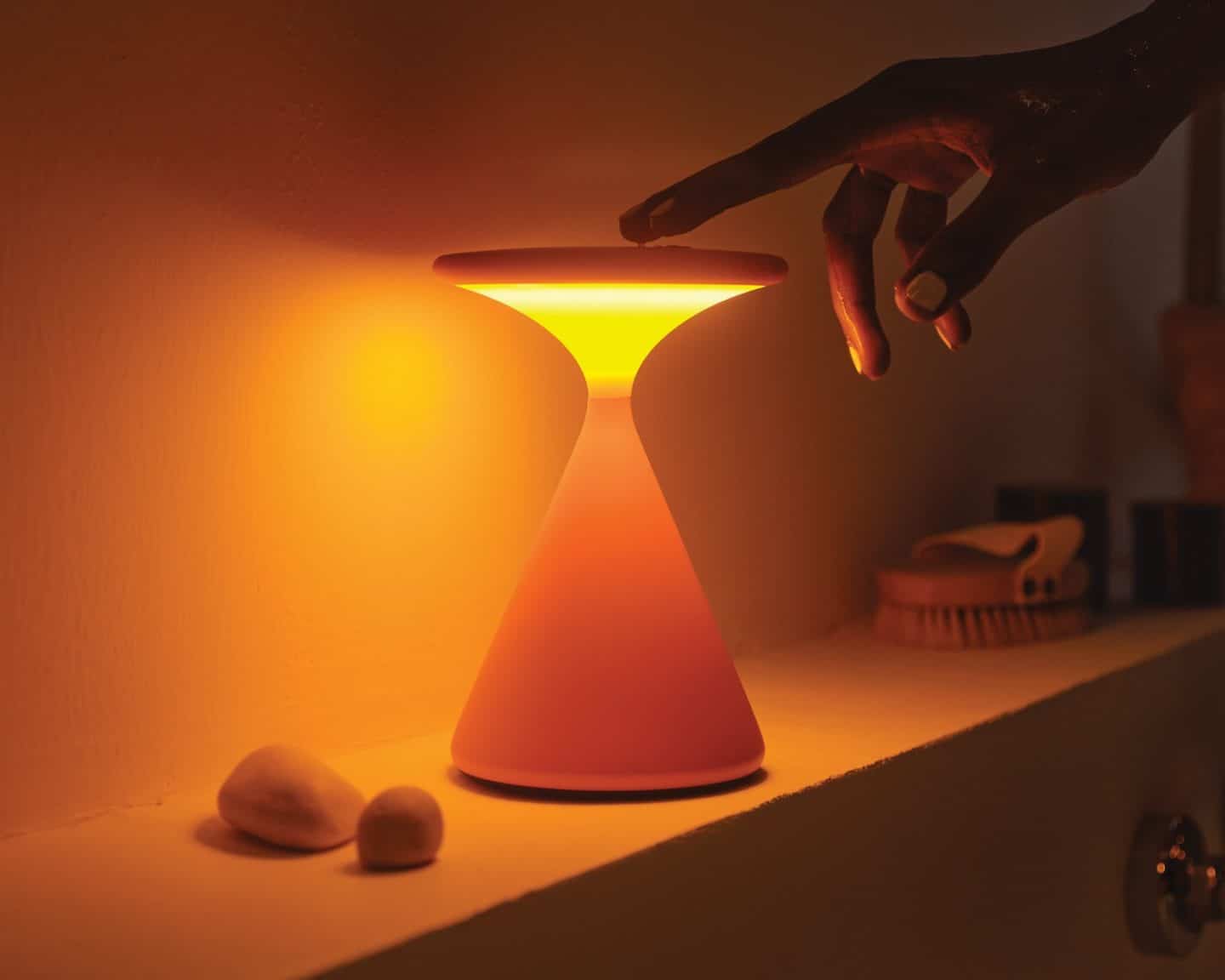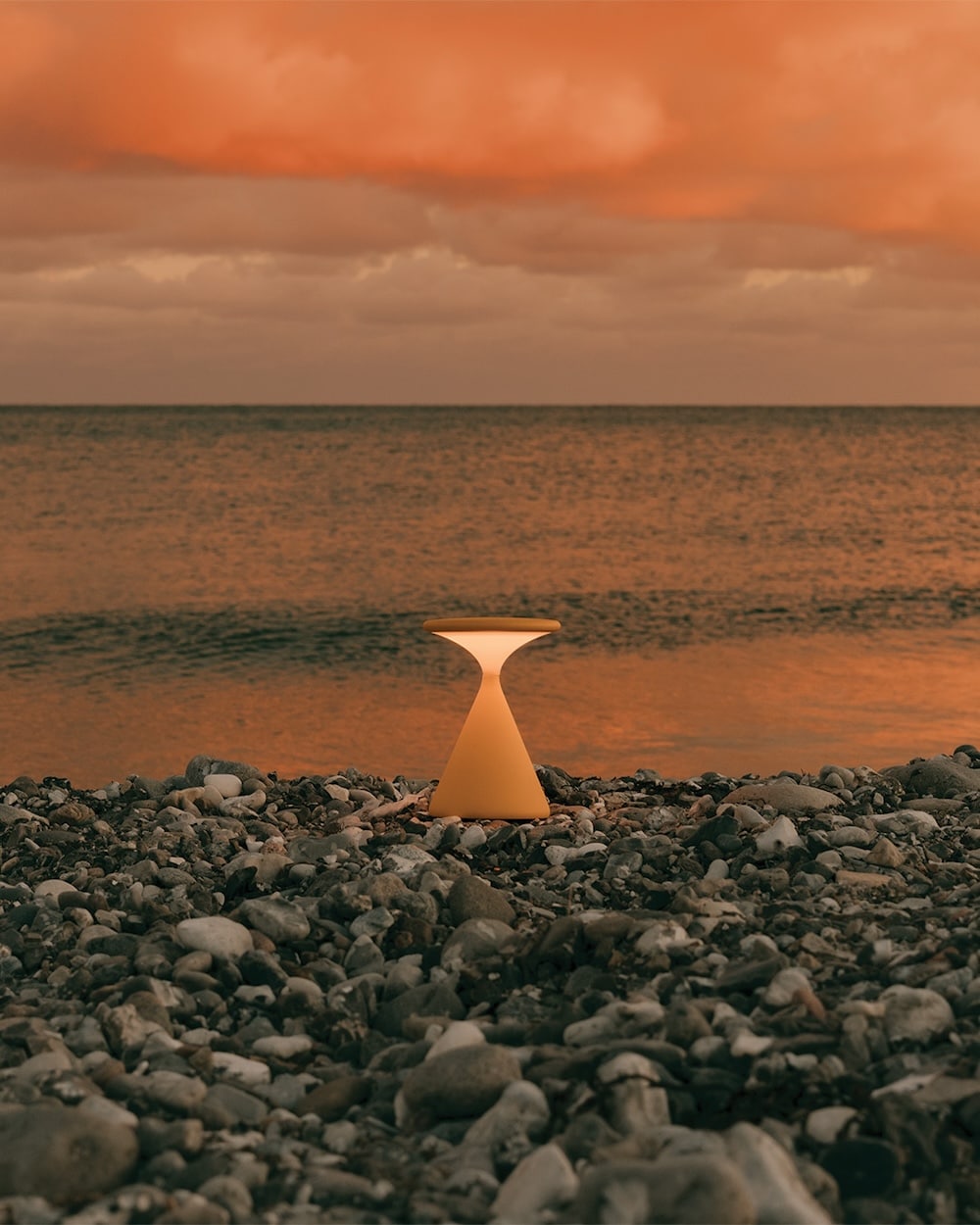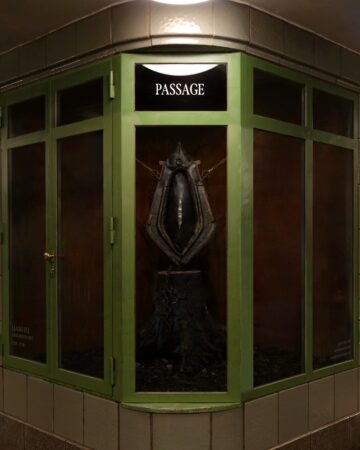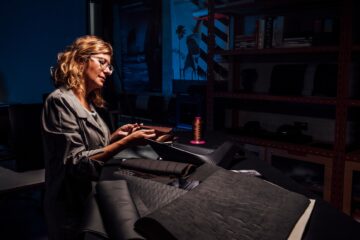
IN CONVERSATION WITH LITTLE SIMZ
On being brave: Numéro Berlin spoke with Little Simz about her freshly released sixth…





Timon and Melchior, founders of Grau, share insights on their work and the german design tradition.
Our collaboration as artists developed in an organic process over the last 14 years. As brothers, we were friends from an early age on and later moved together to Berlin and started to paint abstract expressive paintings. Since then, we have shared one canvas, body of work and dialogue. Today at GRAU we have the chance to collaborate with many great talents. Collaboration makes us incredibly grateful and GRAU is the most inspiring environment we can think of. Our call to everyone: collaborate more. With our work we have always aimed to activate people’s senses and perspectives to their surroundings. At GRAU we realized that light is the ideal medium for us to create such experiences. Since then, we completely immersed ourselves in the beautiful medium of light and into GRAU’s mission to activate what makes us human. GRAU is an interdisciplinary team of 150 creative talents designing smart lamps that feel magical and increase well-being. GRAU offers a wide range of portable lights, sculptural pendant lights, spotlights and professional workplace lighting. All of our lamps are assembled at our Campus in Hamburg, Germany.
“Many people are not aware of how much light affects their lives and mood: light determines how we perceive moments and how we feel about them.”
We find it astonishing how much the lighting industry reduces lights to pragmatic or decorative objects. At GRAU we are immersed in a mission: our lamps activate people’s emotions with light. Throughout human history light carries a strong emotional and symbolic meaning. Many people are not aware of how much light affects their lives and mood: light determines how we perceive moments and how we feel about them. People have always shared these strong feelings about light — we love the light of a sunset or a candle, and we even travel after the sun. Why don’t lamps also have such an emotional lighting experience? We just invented Sunset Dimming, a unique and completely new lighting experience, unseen in the industry. It is a curated spectrum of light colors that have a proven relaxing effect on the body and mind.
“Every good work, in art as much as in business, is a result of the values you believe in and act upon.”
We carry more references from the arts than from industrial design. But we are certainly influenced by our father, who is an exceptional designer. He involved us as kids in his process, which is an exceptional empowerment for kids. Apart from this we have many artists and designers as friends and share close dialogues with them. We love to collaborate with them, too. This creative exchange is not bound to one city or country, nevertheless Berlin has been the most potent source of inspiration for us in the last years.
We are artists at first, this attitude influences every action we do. Every good work, in art as much as in business, is a result of the values you believe in and act upon. This means that everything boils down to character and values. Business is a tool, an important means to an end. We always aim to create bridges between different fields. Working within a larger organization and network of people allows us to collaborate and speak to a larger audience.
“It is from Willem de Rooij that we especially learned the power of bringing a diverse group of people together and empowering their critical discourse.”
We are grateful that we have the chance to learn from such inspirational artists and personalities. Each of them uses collaborative group-forming to create a critical discourse as a source of creating work and impact. When Ai Weiwei selected artists to his class, he chose not only from the art department, but also from the architecture, design, fashion and music departments. We were the only two art students in his class. This interdisciplinary approach immediately related to us. Hito Steyerl built her discourse at the University of arts around the concept of a platform. Every class member had a voice and guests were invited to join the class too. It is from Willem de Rooij that we especially learned the power of bringing a diverse group of people together and empowering their critical discourse. Willem is a master in shaping perspectives and therefore one of the best teachers we know. The work of Wolfgang Tillmans has been an important inspiration to us since our youth, it is one of the best bodies of work in art history. While studying in Berlin, we had the chance to work in his studio and we organized a campaign against the far rights party (AfD) with him. Today, we are also fascinated by how photography and light are related. They are two sides of one coin. We first got to know the work of DIS at their Berlin Biennale in 2016. The Biennale was a shock to us and had a strong impact on our development as artists. We later became friends and took part in their Biennale for moving image in Geneva 2021. Their curatorial and artistic practice embraces openness and collaboration.
“We translate the experiences from our museum shows and artworks such as the Bonfire into our smart lamps and make them accessible to a wider audience.”
Yes, our artworks inform our products, and vice versa. We create both with the same attitude and mission, yet for different use cases and environments. Therefore, we built a bridge between art institutions and the home. We translate the experiences from our museum shows and artworks such as the Bonfire into our smart lamps and make them accessible to a wider audience. Sun or Salt are like compact versions of the Bonfire sculpture, ready to use at home.
Salt is the best smart lamp you can find. It’s a small yet powerful portable lamp. You can take it wherever you want, it moves in your home and fully transforms the way you feel. We especially innovated on its light quality, which lets you relax in the evening. Sun is a 360 degree ambient light made out of mouth blown glass. It fills the space with warm glowing light, like a sunset. Parrot was our first industrial product design and is a super multifunctional standing lamp. It’s body can be turned, it is height-adjusted and battery-powered. Formally, Parrot refers to the human figure, inspired by the sculptures of Alberto Giacometti: a thin head, on a long body, with big feet.
“Since we were kids, we loved to sculpt bust out of wood, that is another reason why we are so excited by this new piece.”
We are about to launch Sun Home, an exploration into the human figure, light as a sculptural piece as well as the materiality of wood. It’s like a love letter to all the beautiful busts in the world. Sun Home is made of ash wood, each lamp is unique. It has a glowing head made out of mouth blown glass transforming the space with a warm 360 degree ambient light. Since we were kids, we loved to sculpt bust out of wood, that is another reason why we are so excited by this new piece.

On being brave: Numéro Berlin spoke with Little Simz about her freshly released sixth…

With his latest installation "SPINE BOUNDARY" at Hermannplatz, Berlin, Chinese born Artist…

Once a challenger brand in the automotive world, CUPRA has steadily entered a new era, one…
Interview by Chiara Anzivino